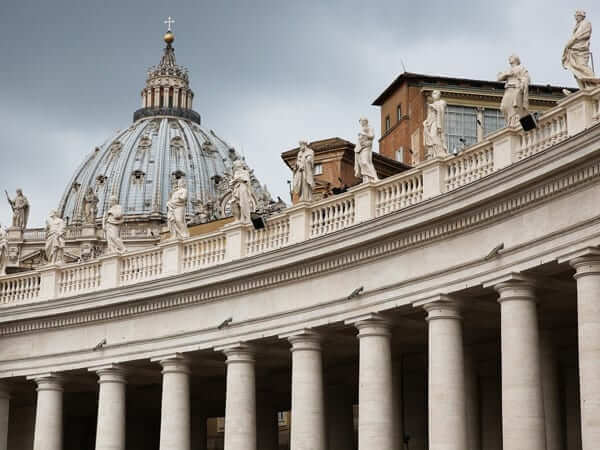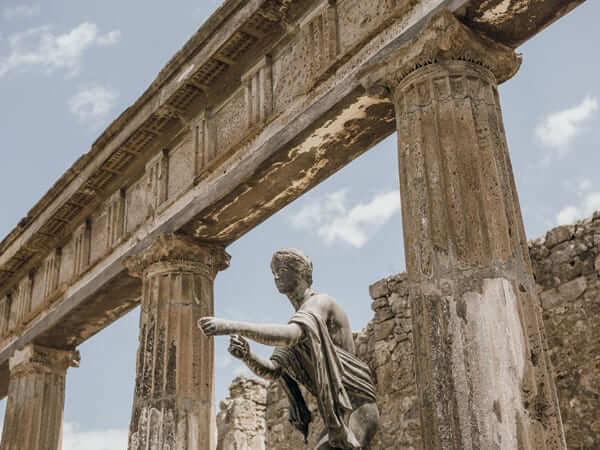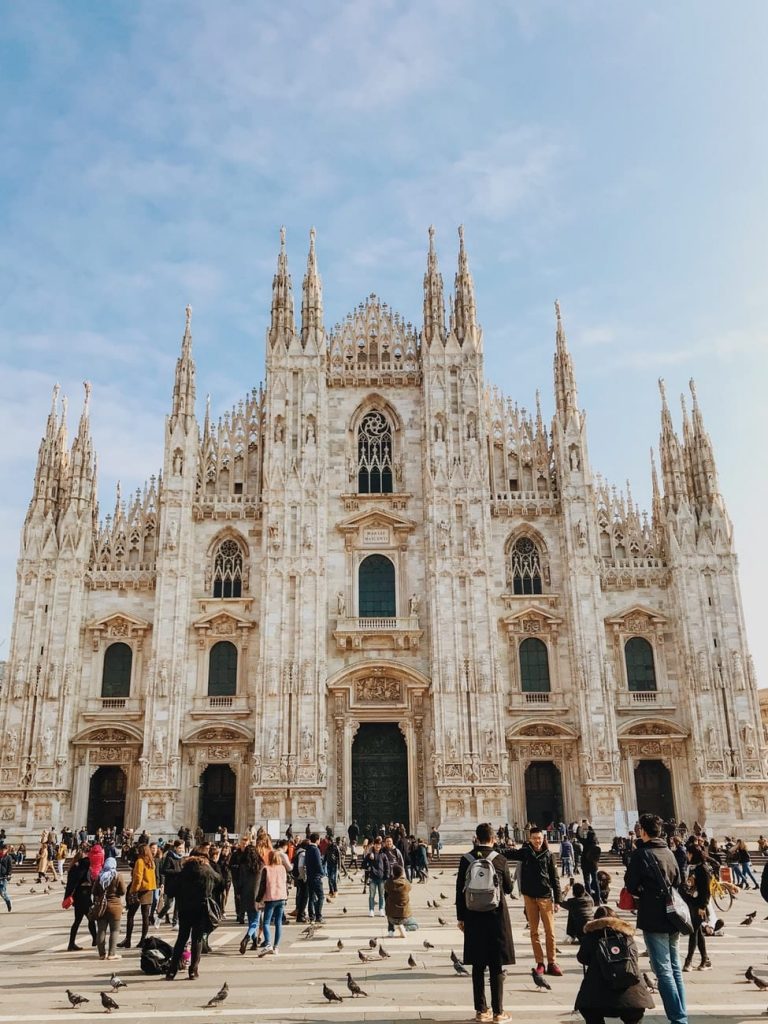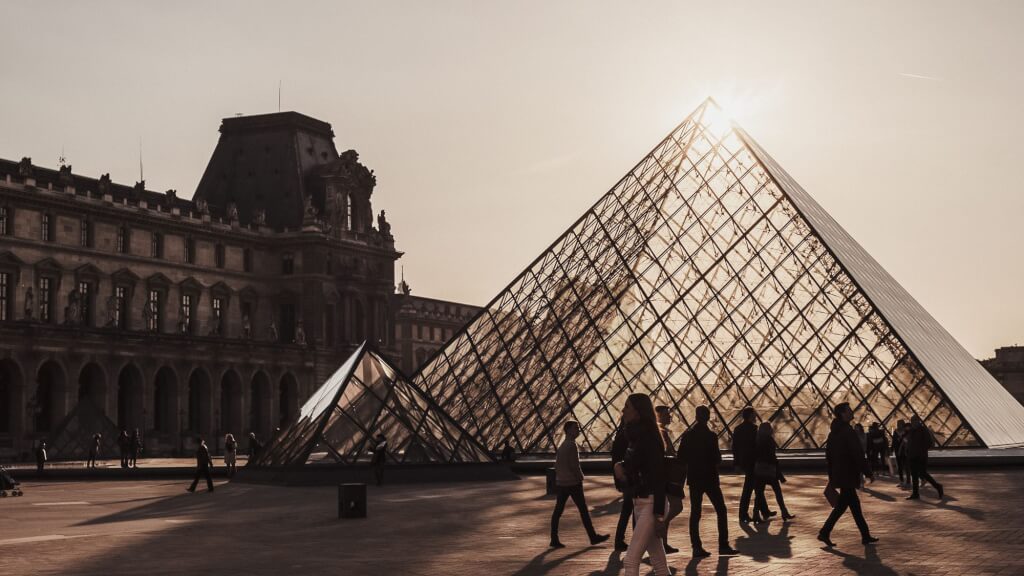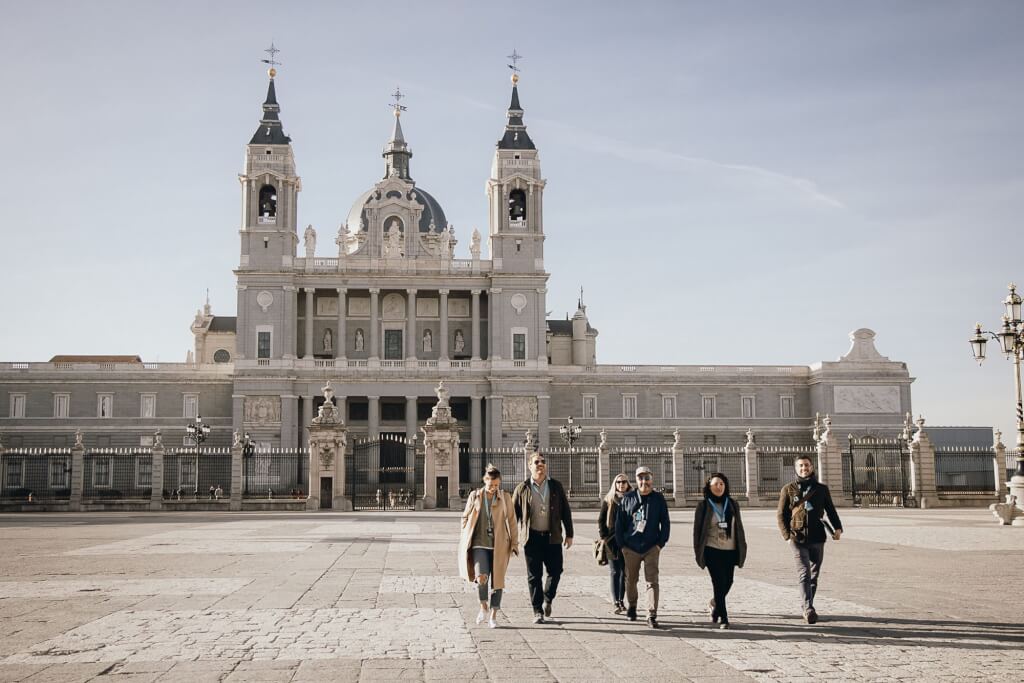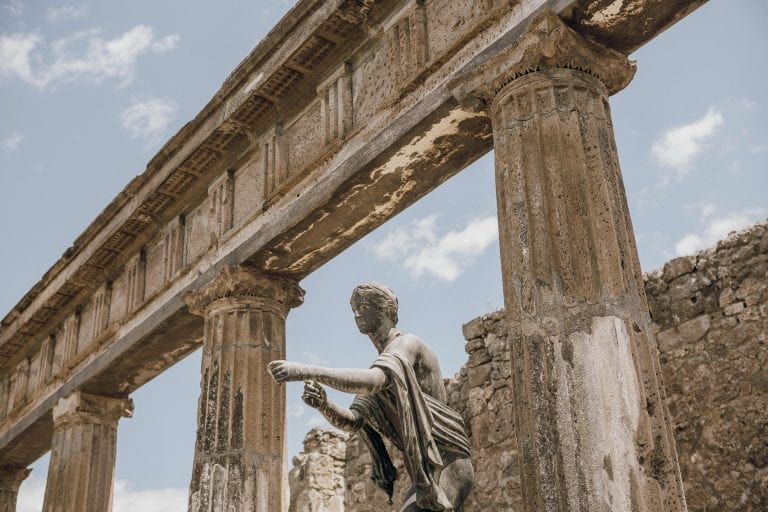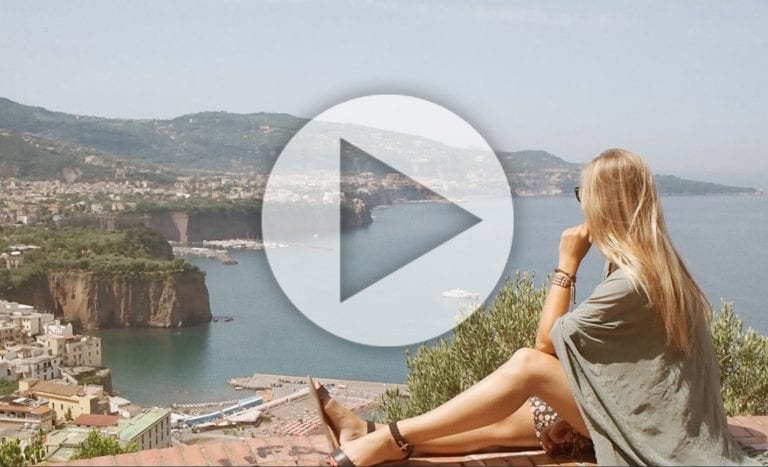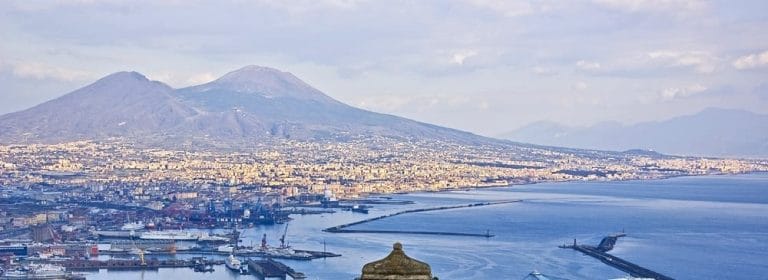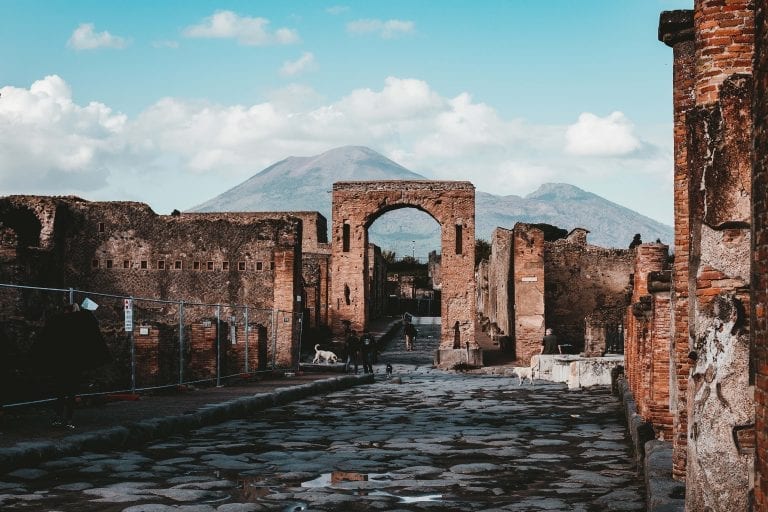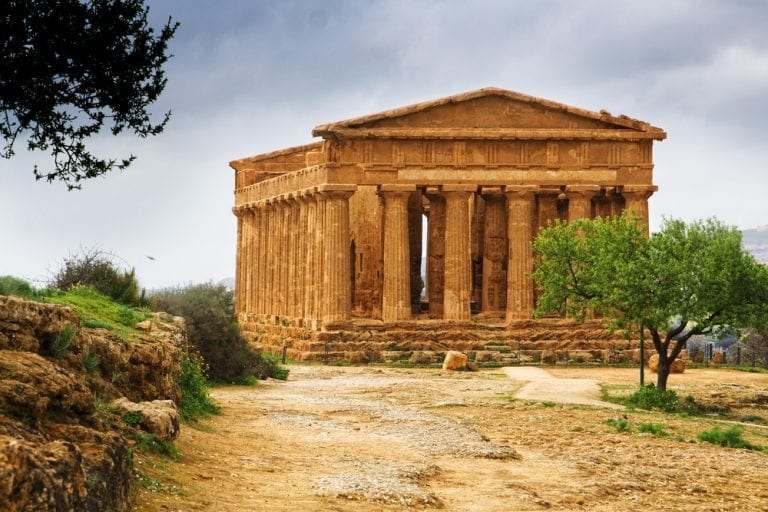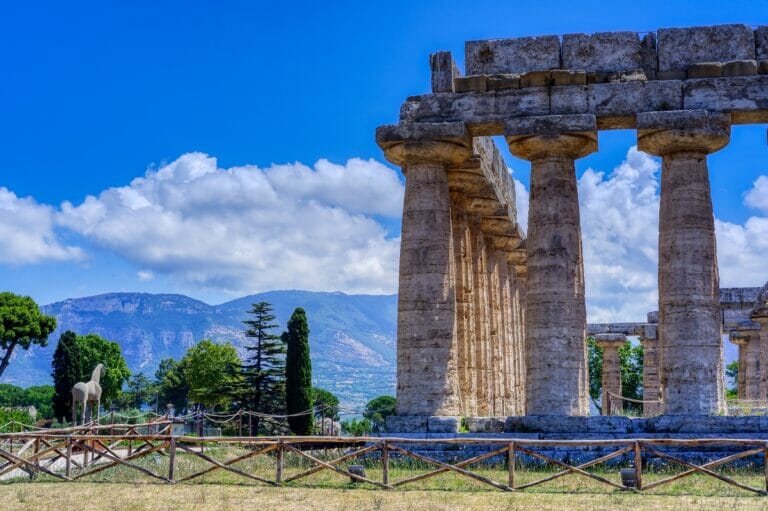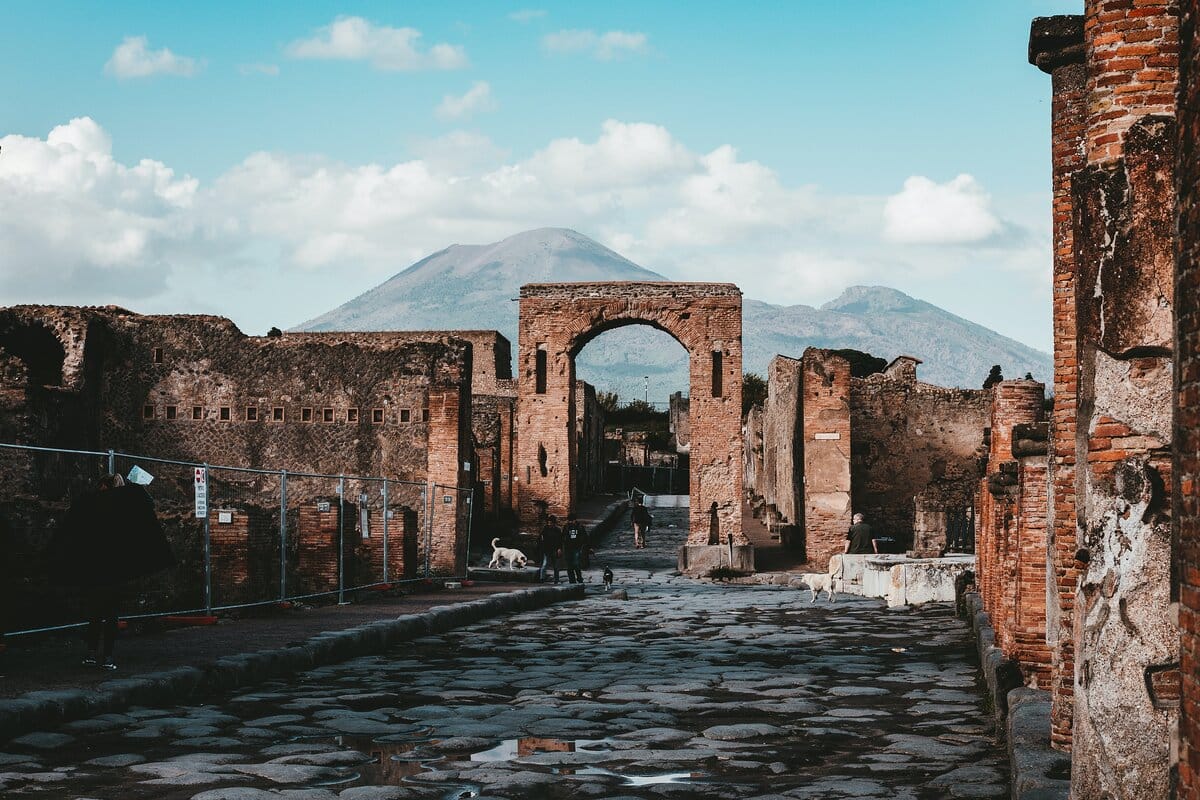
Pompeii Guide: 10 Essential Tips to Know Before Visiting the Ancient Roman City
November 26, 2025
One of the most famous Ancient Roman cities, Pompeii has become synonymous with history, as well as tragedy. Buried by the eruption of Mount Vesuvius in 79 AD, the town and many of its inhabitants were simultaneously destroyed and preserved in Volcanic debris. It remained frozen in time until it was discovered by archeologists during the 18th century and excavations into its intricate history began. It is no wonder it is one of the most intriguing sites in the world today. So, here is a Pompeii Guide of things to know before you visit this remarkable city.
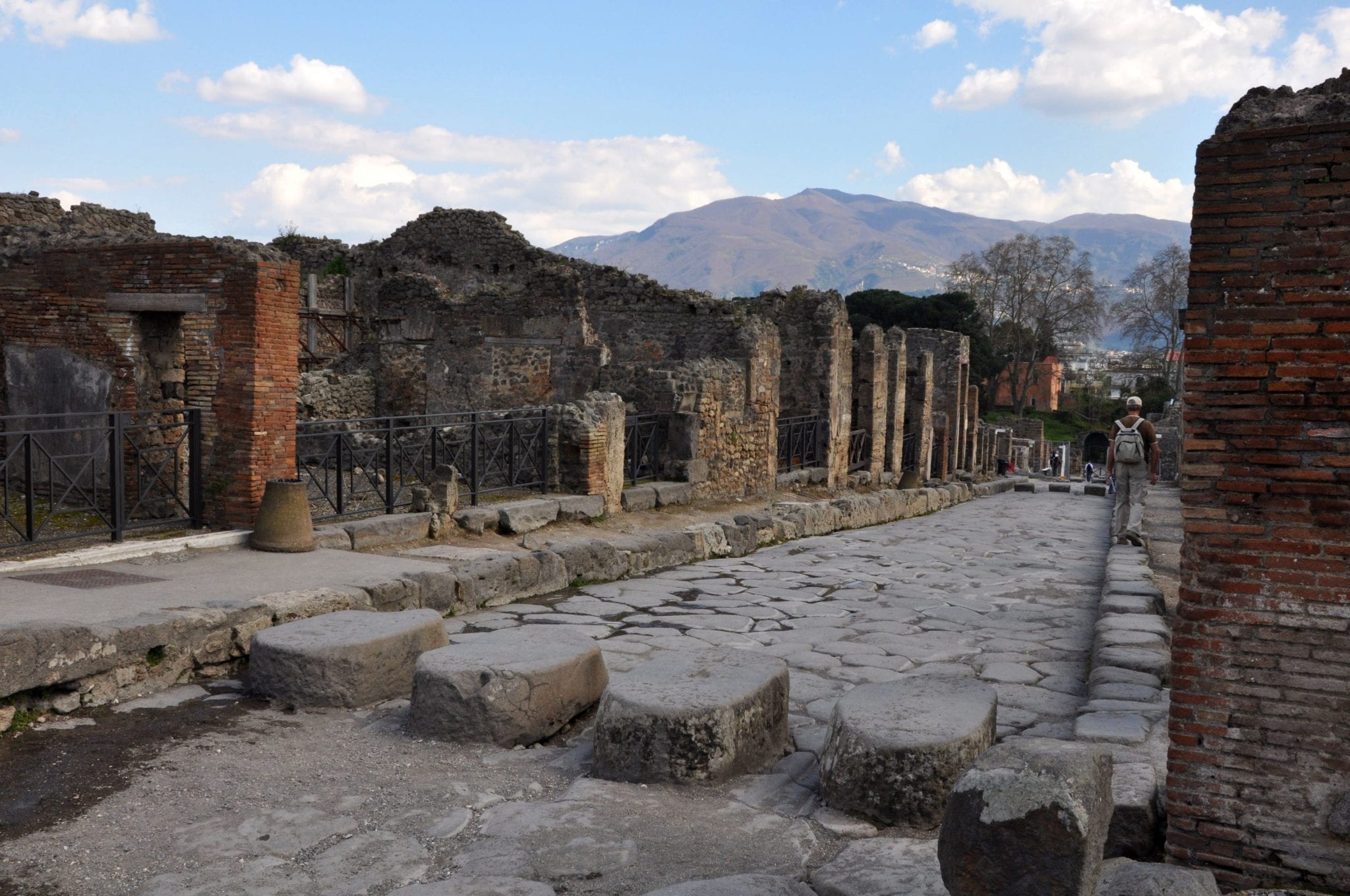
Keep reading our Pompeii guide to make the most of your trip to the ancient city.
Table of Contents
ToggleA Pompeii Guide of all you need to know
From tragedy comes knowledge, and now Pompeii offers a rare glimpse into the past. Whether you’re interested in art, archeology or anthropology, Pompeii is one of the best insights into human history. Walking its streets is like stepping through time, so it’s important to do some planning to make the most out of your visit. From incorporating Herculaneum and Mount Vesuvius into your itinerary and separating Pompeii facts from fiction, to how to get there from Naples, follow these 10 steps for a stress-free Pompeii adventure. And for more, you can also see our complete guide to visiting Pompeii
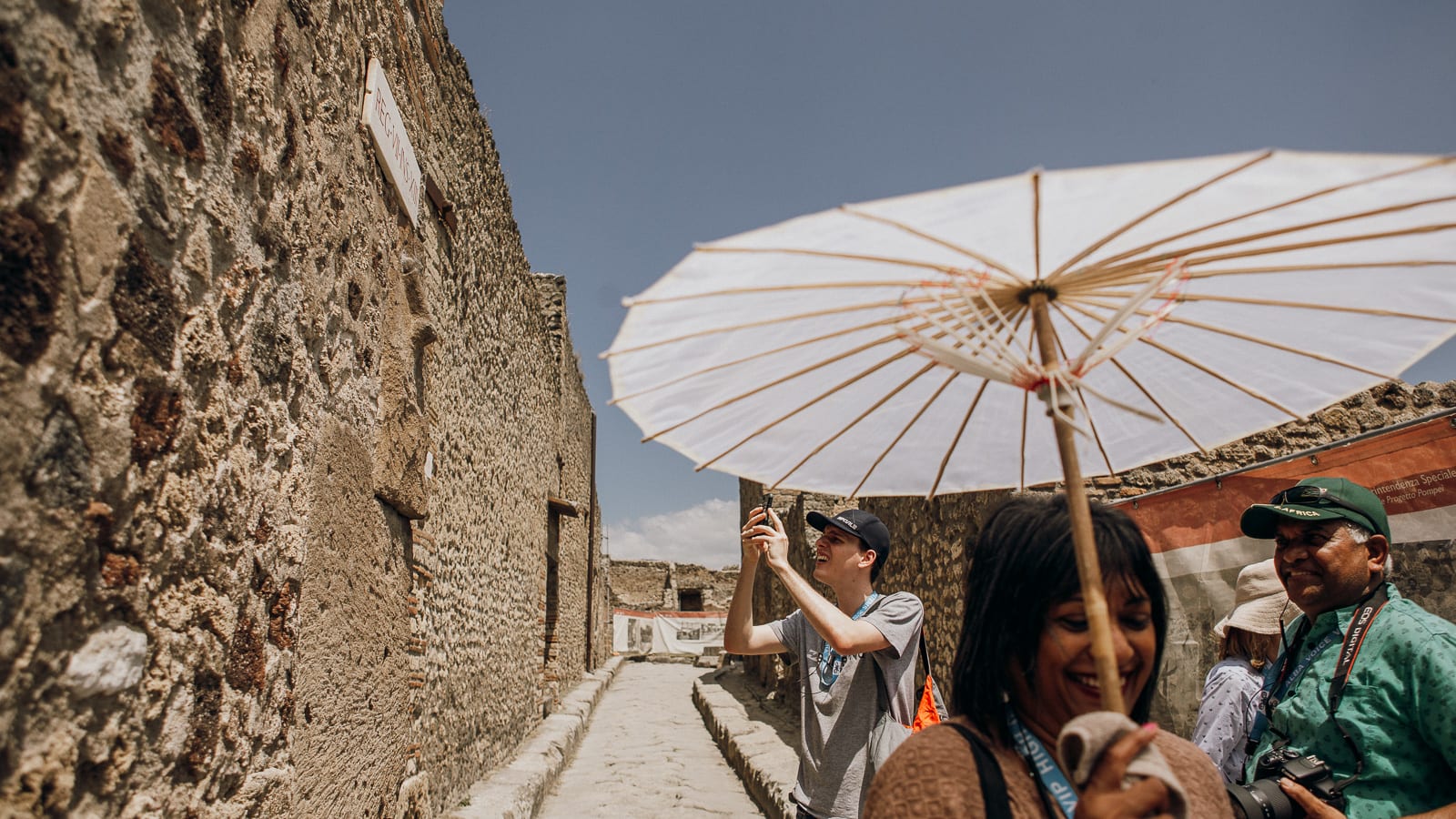
Make the most of a once-in-a-lifetime visit to Pompeii!
1. Don’t go in blindly
Once you’re inside Pompeii, the site offers very little by way of information about what you’re seeing, Though this helps to maintain authenticity, it’s also important to know what you’re looking at for an enriching experience.
A Pompeii guide is not automatically provided with your ticket, but you can purchase an audio guide at the entrance for a small charge. This will provide a good foundational knowledge of the sites you pass by. There are also some apps that can be used as audio guides during your visit. One of the top rated is Discover Pompeii which has six hours of audio content and an offline map that can be used during your visit.
Alternatively, you can opt for a guided tour of Pompeii which will show you the most interesting parts of the Ancient town and bring it to life with detailed stories and historical knowledge. While guides can generally be found loitering around the ticket desk, it’s definitely a good idea to book ahead of time so you can be assured of the quality of the tour and the guide’s knowledge of the area. One of the best ways to ensure quality is to go with a reputable tour operator (like Walks of Italy!)
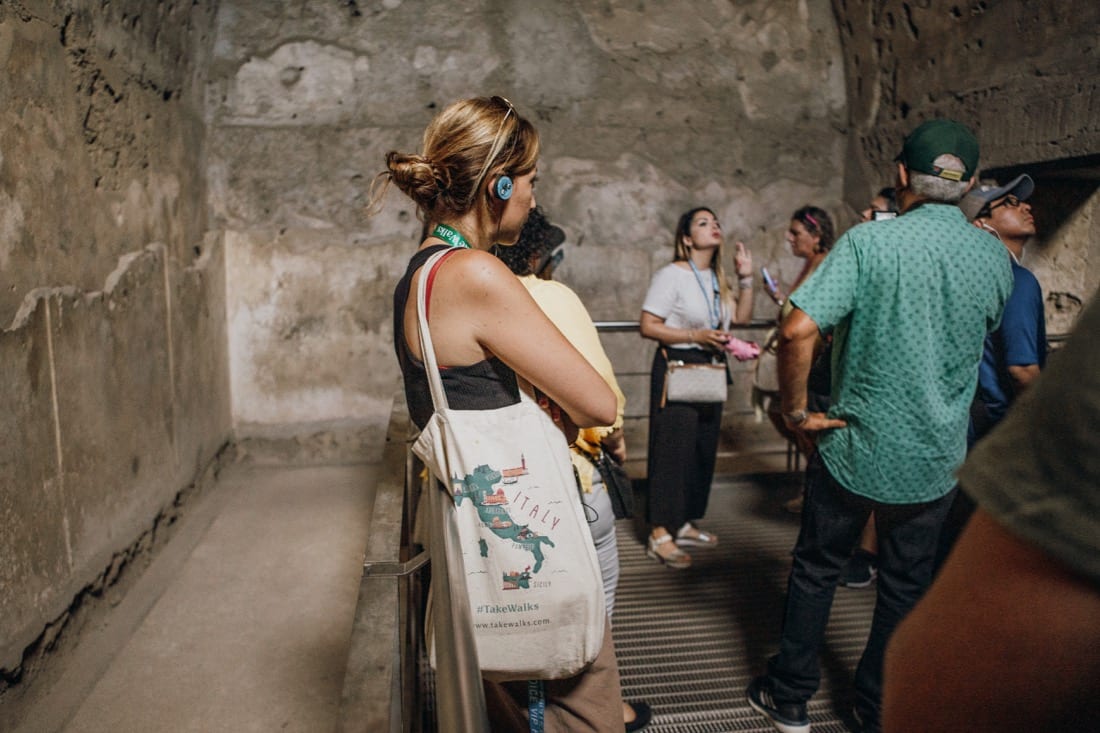
Looking for a way to visit Pompeii in one day? Make sure to sign up for a tour.
2. Do be prepared to go with the flow
While planning is essential, any successful trip to Pompeii also requires a degree of spontaneity. Because this is primarily an archeological site, with new discoveries being made constantly, areas can be closed (or opened!) without warning. Keep an eye out for the graffiti and ancient carvings that mark many of the town’s walls and be open to wandering through any doors that are unlocked on the day. You could find anything from ancient mosaics to intricate paintings. As the Romans say, Audaces fortuna iuvat – fortune favours the bold!
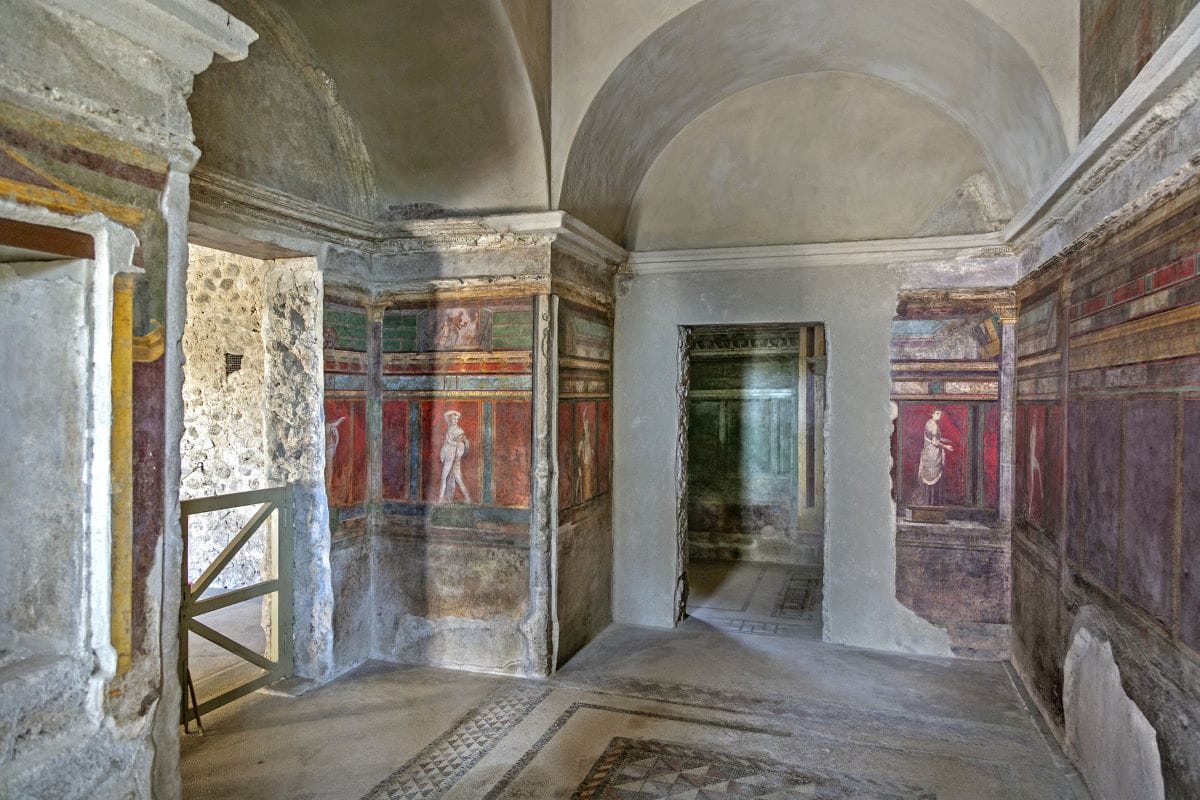
Pompeii frescos and arched walls.
3. Do visit Mount Vesuvius
To fully take in what happened on that fateful day on 24th August 79 AD, a trip to Mount Vesuvius is necessary. Once you see the enormity of the Volcano you can fully appreciate what a catastrophic event its eruption must have been for the people in the vicinity.
Though Vesuvius may be listed as one of the most dangerous volcanoes on earth, don’t let this deter you. This is largely due to the number of people that reside in its vicinity, meaning if it were to erupt it would have a larger impact than another volcano with a smaller settlement nearby (even if that one was more likely to become active).
Vesuvius is also tracked minutely by an observation station (the Vesuvius Observatory) who are alerted to the smallest murmurs inside the volcano’s depths. Connected with the legend of Hercules and long believed to be the residence of gods (and monsters) from Roman mythology, Vesuvius also offers one of the best vantage points to look down at the beautiful Amalfi Coast.
Read more about why Mount Vesuvius needs to be on your Pompeii itinerary.
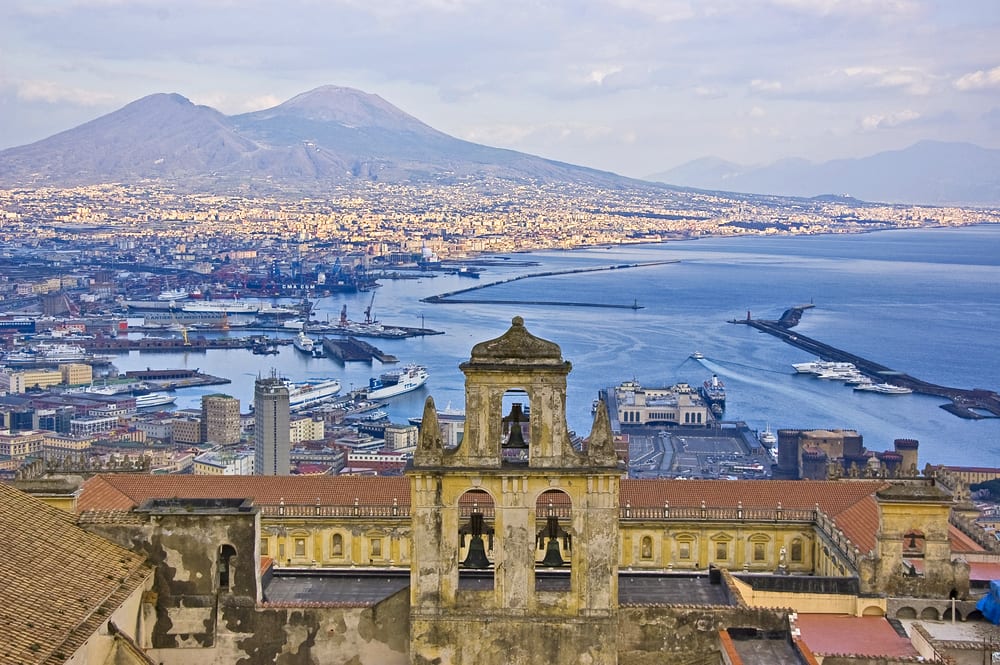
4. Don’t forget about Herculaneum
When people hear ‘Mount Vesuvius’ they automatically think of Pompeii. Few people realise that a number of other Ancient Roman towns and settlements were destroyed during the volcano’s unprecedented eruption in 79 AD. One of these towns was Herculaneum, Pompeii’s smaller yet wealthier rival. Because Herculaneum is much closer to the volcano, it was covered in molten lava when the volcano erupted, instead of the layer of thick ash (pumice) Pompeii was preserved by.
Though both sites are incredibly well maintained, Herculaneum was covered in thicker mudflow which meant it was more fully encased and consequently, better preserved – albeit much more difficult to excavate for its original archeologists. Thankfully, it was excavated and today it provides another fascinating insight into the past.
An economic rival to the middle-class Pompeii, the upper-class Herculaneum contains many lavish houses and marble-work not to be found in its neighbouring towns. It’s also usually far less crowded because of its lesser-known status. Easily accessible by public transport, combine both towns in one day for an Ancient Roman odyssey.
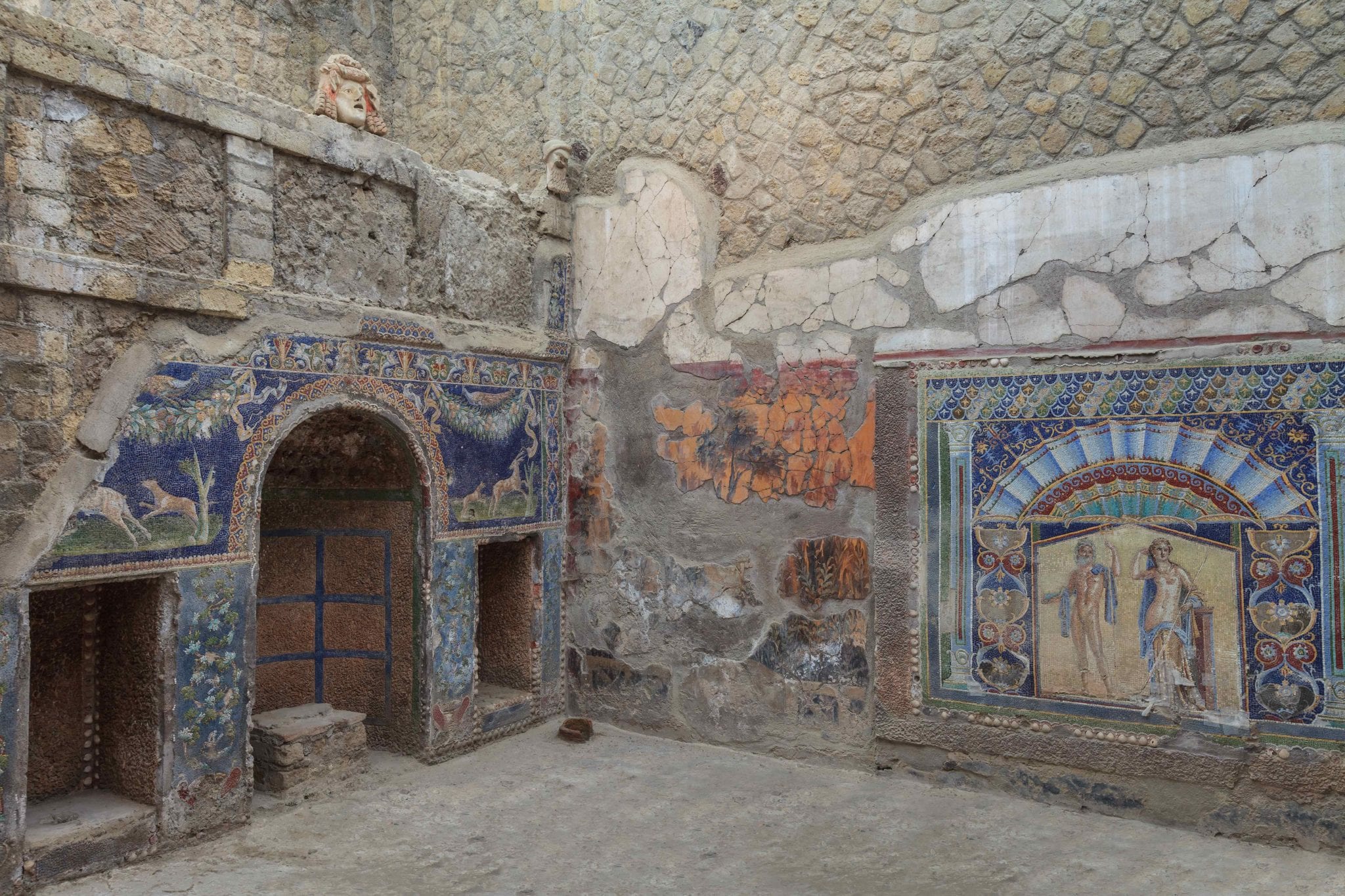
This amazing wall mosaic of Neptune and Amphitrite was unearthed in Herculaneum.
5. Do take in the art, as well as the architecture
Stepping back in time and walking the streets that Ancient Romans once crossed is an uncanny experience, and you should appreciate this rare opportunity to its fullest. However, in addition to the temples and ancient restaurants preserved in this seaport town are masterful works of art depicting everything from everyday life to epic myths and legends.
Many of the ancient villas have been named after the impressive works of art found inside – a testament to their importance. Depictions of everything from the legend of Hercules to Alexander the Great line this Ancient Roman town, and taking the time to admire the art in Pompeii fully is a thoroughly rewarding experience. As with any piece of art, it’s a good idea to get the full context. Research the stories behind the art ahead of time or book a guided tour for a more complete experience.
Traveler’s tip: Want to know more about the city’s stunning artwork? Read our Art Lover’s guide to Pompeii.
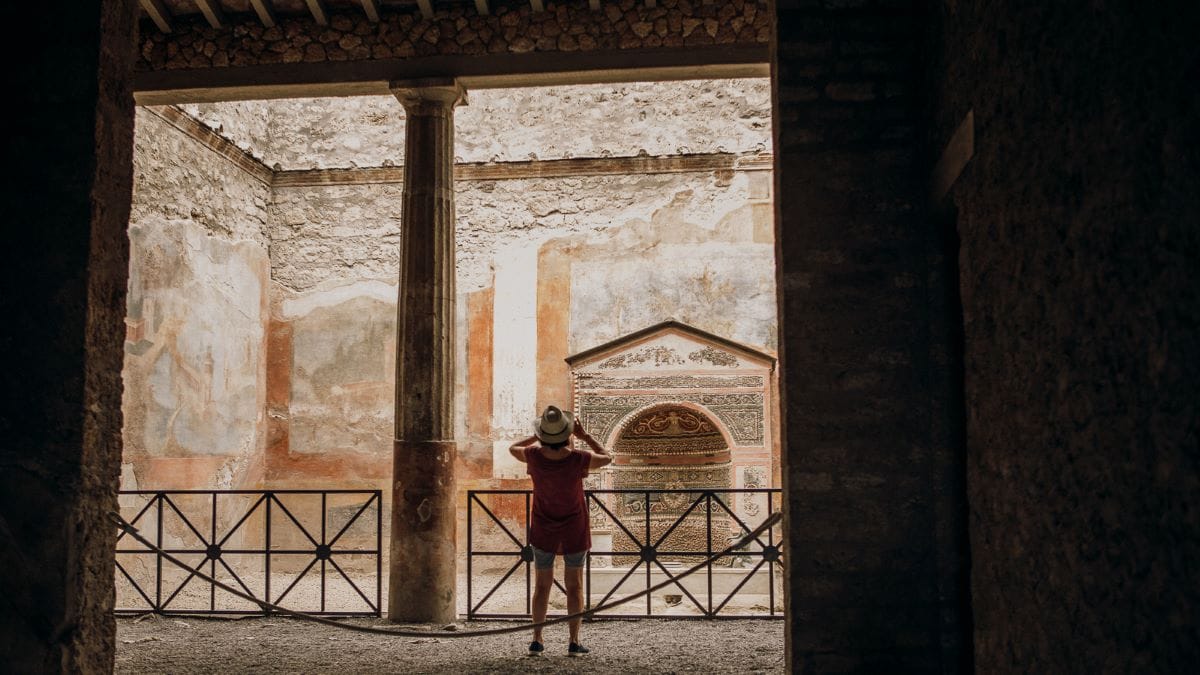
The art and architecture that managed to survive is truly mind blowing.
6. Don’t forget that Pompeii is still an active archaeological site
Many visitors forget, but excavations in Pompeii and the surrounding area are still ongoing. New finds are constantly being uncovered within the area, giving us even more insight into Roman life and the history of this seaport town. For example, an inscription was recently found which researchers believe could indicate the total population of Pompeii. (They now estimate that at one point the city had a total of 30,000 residents).
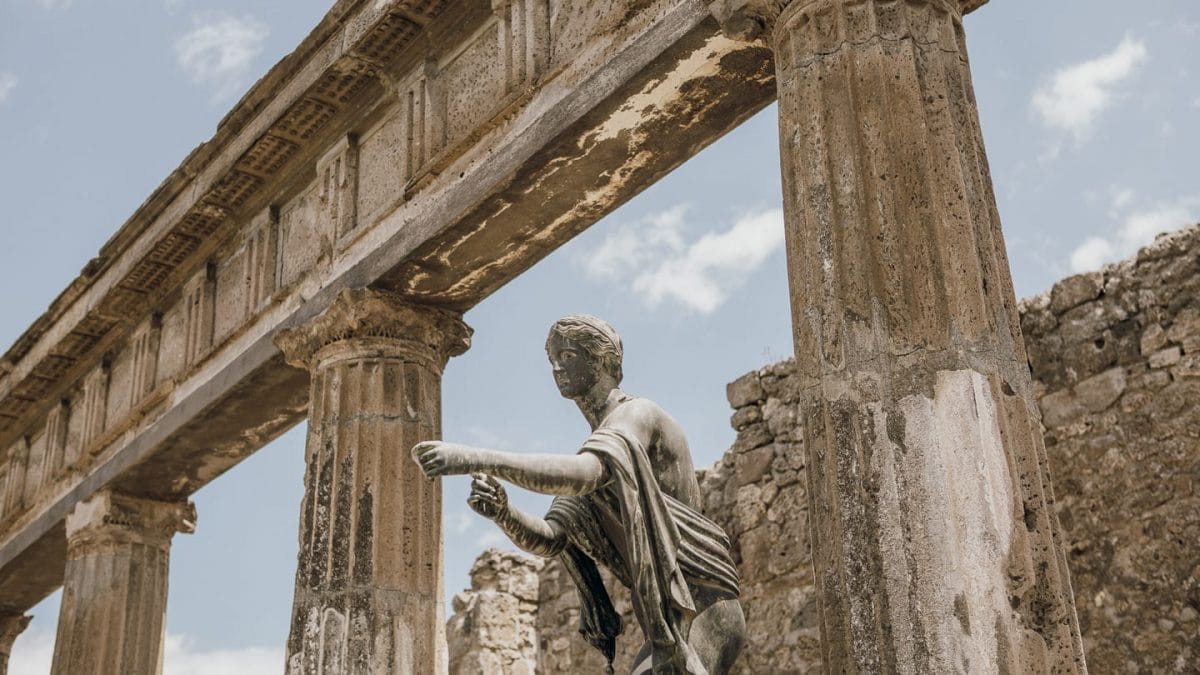
Pompeii is one of the world’s most unique places to visit.
As such, there are a number of rules that visitors need to abide by in order to preserve the archaeological site. You can find a full list of these rules here.
It should also be remembered that Pompeii is ultimately a burial site. It may have happened thousands of years ago, but over 2,000 people – including men women and children – perished when Mount Vesuvius erupted on the 24th of August, 79 AD. Death casts line the streets depicting the final moments, and often expressions, of the doomed. As such, it’s important to maintain a level of respect while inside.
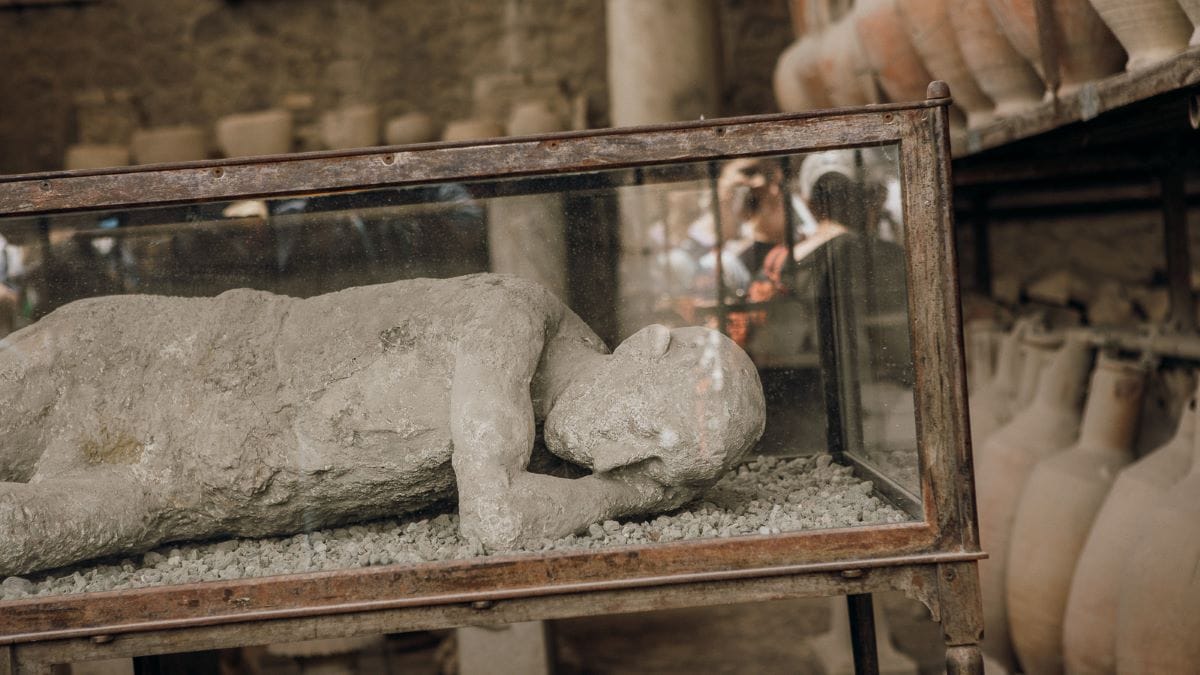
Take a moment to pay respects to the victims of the fateful day that changed this city forever.
7. Do think practically
It’s easy to get swept up in the experience of visiting Pompeii for the first time, but there are some logistics that will make your trip more enjoyable:
Practical tips for visiting Pompeii
- Bring a water bottle – particularly if you’re going on a hot day during the summer, but really this advice works year round. Pompeii is a large city and usually takes approximately 3-4 hours to get through, so stay hydrated!
- Bring Food – as you might’ve guessed, this archeological site isn’t equipped to cater for a large amount of options or budgets. There is one cafe/restaurant on site but we’d recommend bringing your own food. Porta Nola is a designated picnicking spot in Pompeii. Don’t use any other spaces within the site as there are strict rules against eating outside of designated areas.
- Wear flat shoes – there’s a lot of ground to cover in Pompeii and you don’t want to fall behind because you weren’t wearing the right footwear. So many people walking through the ancient city can also cause wear and tear to the ancient streets, so wearing flat shoes will go a small way towards ensuring the next generation of visitors can see what we take for granted.
- Wear Sunscreen – and plenty of it! The town is exposed and offers very little areas with shade, so you’ll want to wear a high SPF and bring it with you so you can top up during the day. If you’re visiting during the summer months, it’s a good idea to wear protective clothing such as a hat, sunglasses, and lightweight coverings to protect your skin from sun exposure.
- No Large Bags – Large bags measuring over 30x30x15cm aren’t allowed into the site. Any bags larger than this can be stored at the train station. There is also a cloakroom on-site for any smaller items.
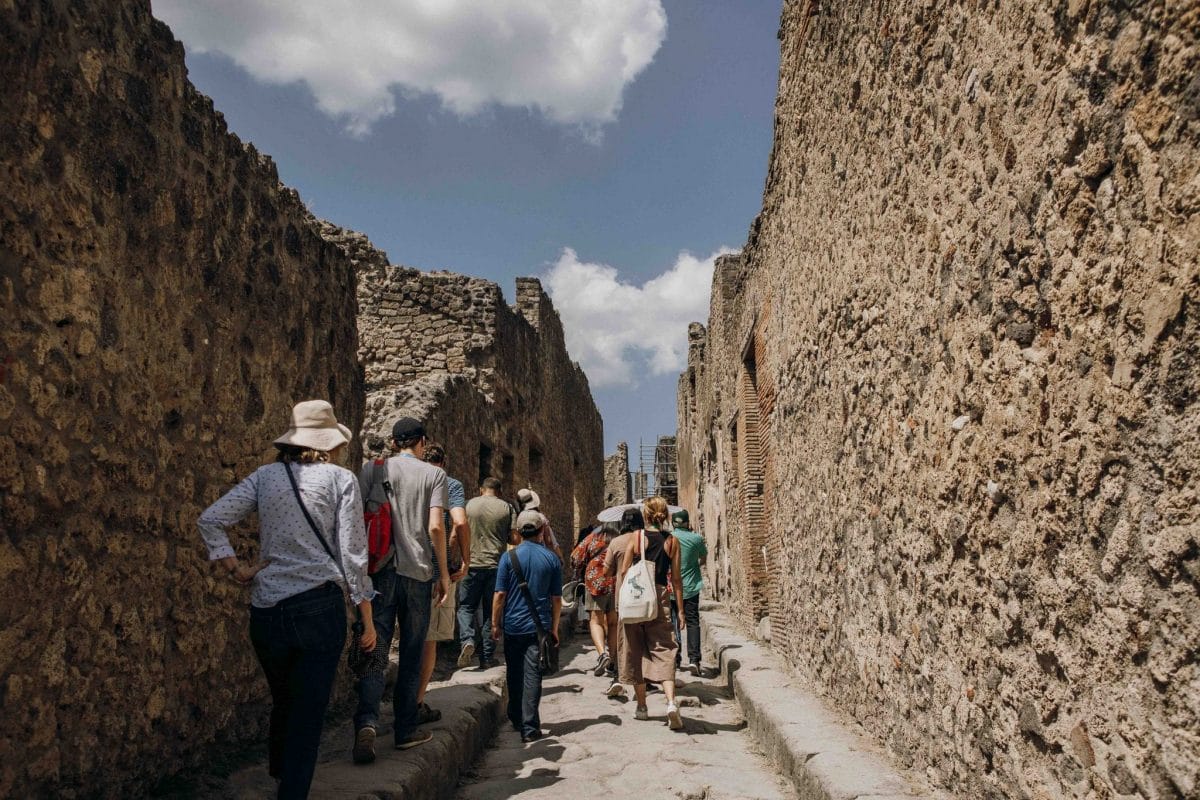
The ancient town offers little shade, so be prepared
8. Do choose the best entrance
There are three entrances to Pompeii, which one you use depends on your needs.
- The main entrance is located at the Porta Marina. This entrance has the most facilities, so if you’re looking to hire an audio guide, need to ask questions at an information point, or purchase souvenirs, this is the gate you should use.
- The second largest entrance, the Piazza Anfiteatro, is where the public bus to Mount Vesuvius stops. Close to some of the most significant sites in Pompeii, including the Forum and town’s amphitheatre, there is also free luggage storage here. While it has audio guides for hire, there is no option to purchase a guided tour at this entrance so it’s best for those who are planning to explore the site on their own.
- The smallest entrance is Piazza Esedra which is adjacent to the Porta Marina. Though it doesn’t have much in terms of facilities, this gate is usually far less crowded than the others.
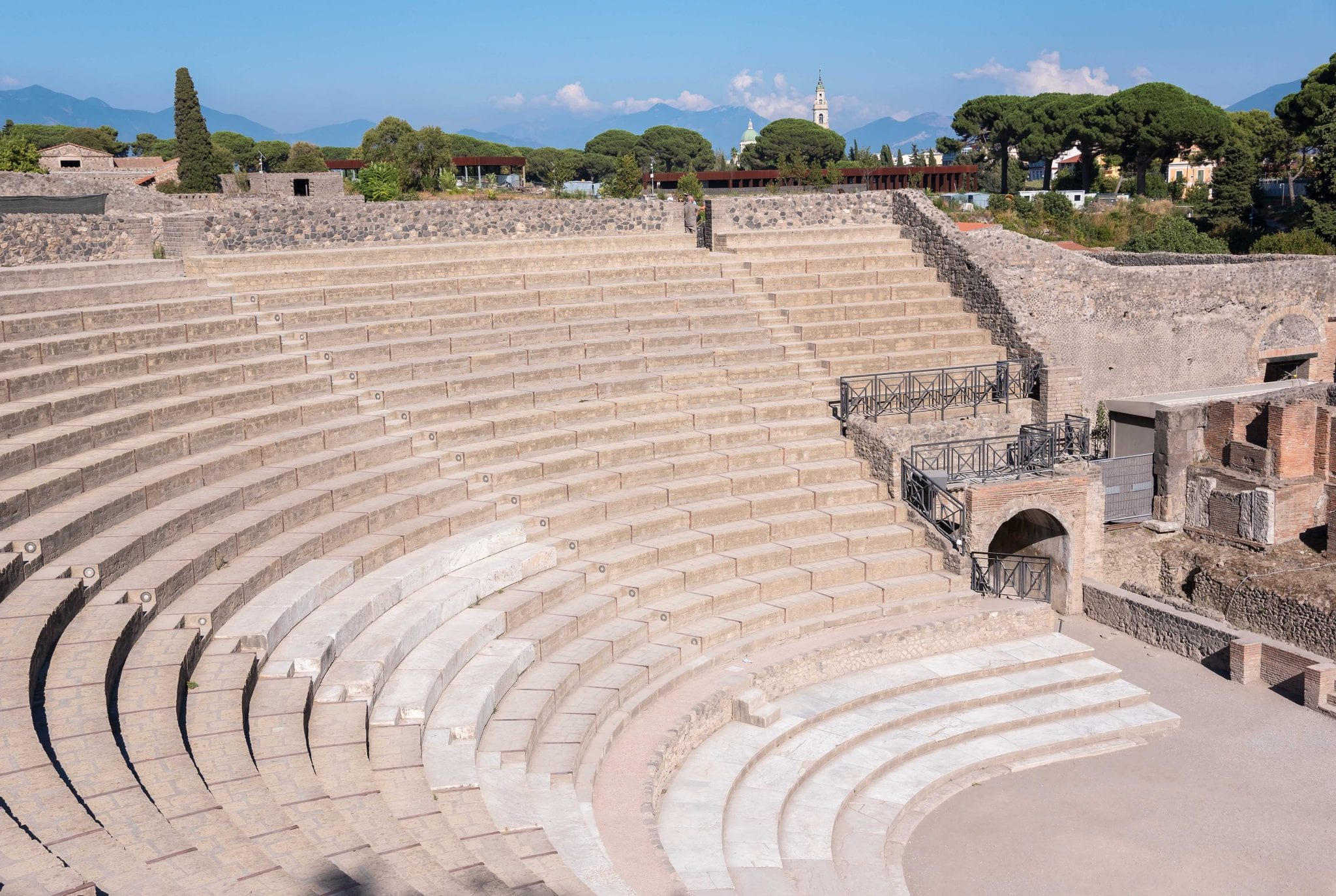
Pompeii’s ancient amphitheatre is amazing to see in person.
9. Do know when to go
Luckily the archaeological site of Pompeii is open every day during the year with the exception of December 25th, January 1st and May 1st.
- During the Summer schedule (running from the 1st April to the 31st October) the site is open from 9am – 7.30pm, with the last entrance of the day at 6 pm.
- During the other half of the year the site opens from 9am – 5.30pm. Visitors planning to go during the afternoon should take note that the last entrance is at 3.30pm (two hours before closing time).
On the first Sunday of every month entrance to Pompeii is free. So it should comes as no surprise that this is also one of the busiest times to visit. Unless the budget for your trip is tight, we recommend visiting on a less-crowded day to have a more enjoyable and relaxed visit.
10. Don’t worry about getting there
Pompeii is located within the reach of public transport and is relatively easy to get to.
From Naples and Sorrento
You can get the Circumvesuviana train from Naples to Pompeii. This train is quite frequent coming twice, occasionally up to three times, per hour. It will take approximately 40 minutes from Naples. If you’re travelling from Sorrento the train trip will be half an hour.
- For the Porta Marina and Piazza Esedra entrances you can get off at the Villa dei Misteri stop.
- For the Piazza Anfiteatro you’ll need to get off at Pompei Santuario.
From Rome
It’s also possible to visit Pompeii and Herculaneum from Rome. Take a high-speed train to Naples from the Termini station, then proceed to the underground Circumvesuviana for a train to Pompeii. This will take about 2 hours in total, depending on train times.
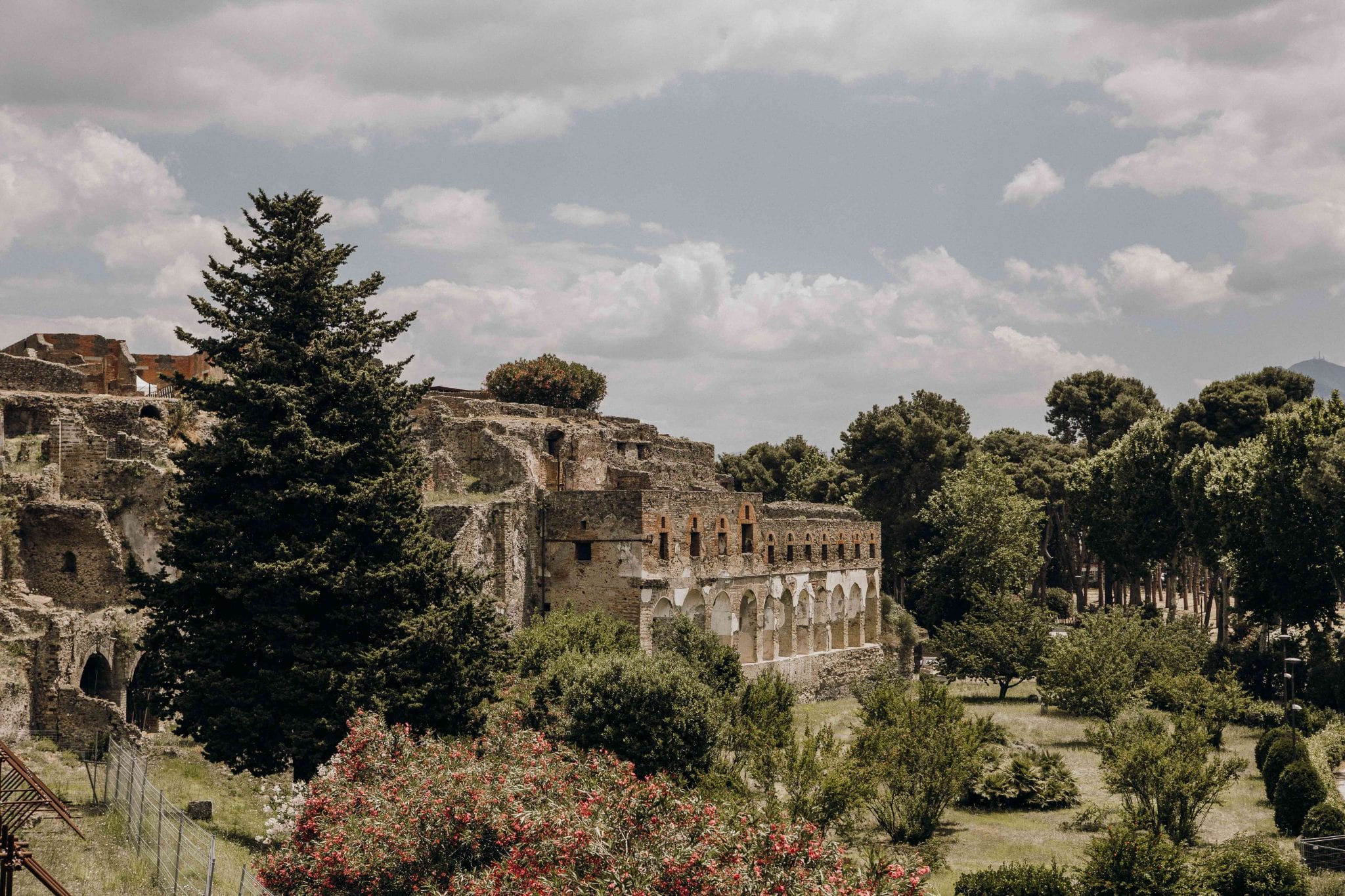
It may feel like you’re travelling through time but Pompeii is relatively easy to get to
FAQ´s – A Pompeii Guide
How long do I need to visit Pompeii?
Most visitors spend 3–4 hours exploring Pompeii, but history lovers often stay 5+ hours. Because the site is huge (an entire ancient city), plan for plenty of walking, bring water, and wear comfortable shoes. If you want to visit Herculaneum or Mount Vesuvius on the same day, it’s best to join a guided tour or start early to fit everything in comfortably.
Is it worth taking a guided tour of Pompeii?
Absolutely. Pompeii has very few signs or explanations, so a guide makes a massive difference. A licensed guide brings the ruins to life with stories, context, and insights that are easy to miss on your own. Audio guides are available, but a guided tour is the best way to truly understand what you’re seeing, especially if it’s your first visit.
Can I visit Pompeii, Herculaneum, and Mount Vesuvius in one day?
Yes, but it’s ambitious unless you join an organised tour. Trains and buses are frequent, but coordinating the timing can be tricky. Most travellers choose either Pompeii + Vesuvius or Pompeii + Herculaneum for a richer, less rushed experience. If you’re short on time, consider a full-day guided tour from Naples or Rome that handles all transportation and timings for you.
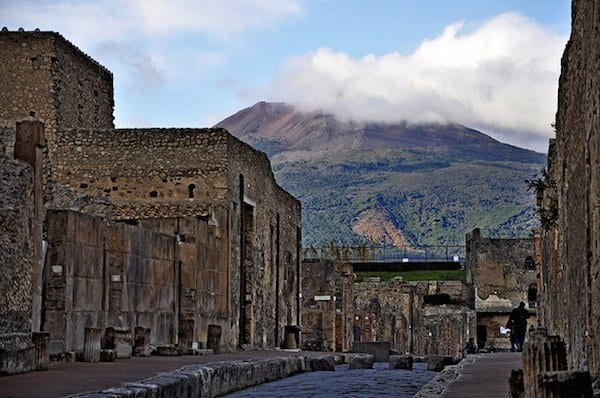
The now deserted streets of Pompeii, feel eerie in the shadow of Mount Vesuvius
Of course, if you don’t want to deal with the logistics of getting to Pompeii you can also book a Pompeii day trip from Rome which includes the stunning Amalfi Coast. It’s a day trip you’ll want to repeat again and again. Don’t miss it!
by Aoife Bradshaw
View more by Aoife ›Book a Tour
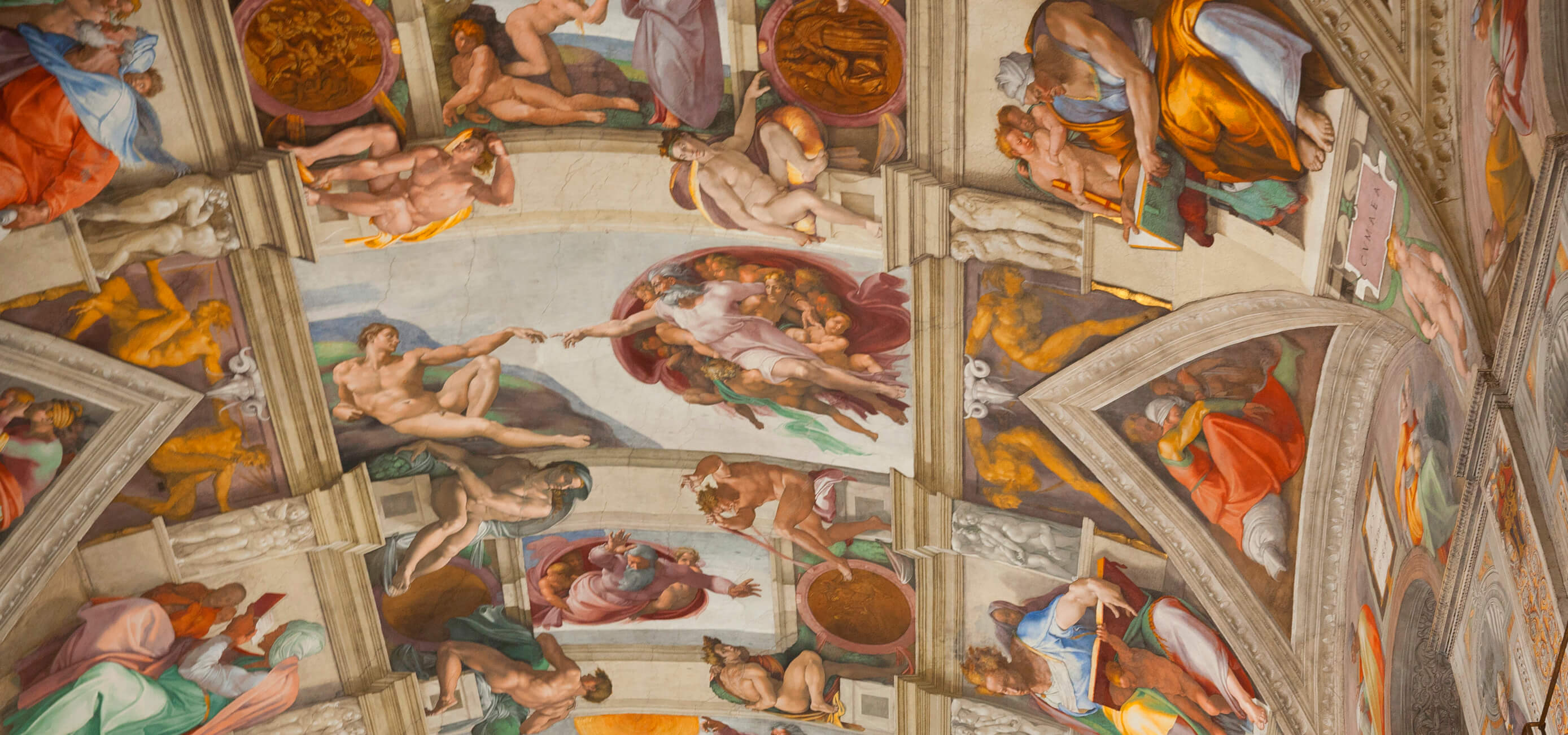
Pristine Sistine - The Chapel at its Best
€89
1794 reviews
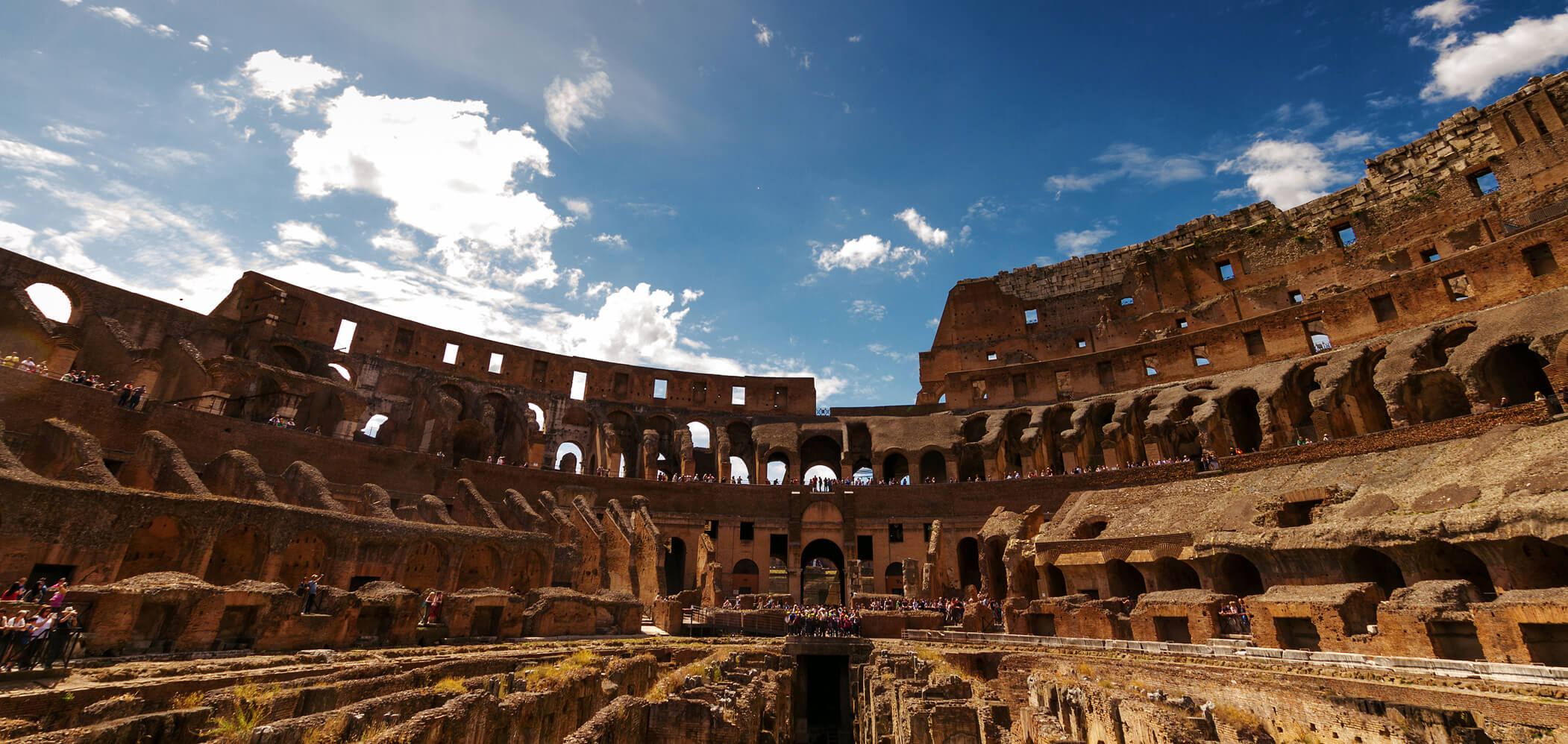
Premium Colosseum Tour with Roman Forum Palatine Hill
€56
850 reviews
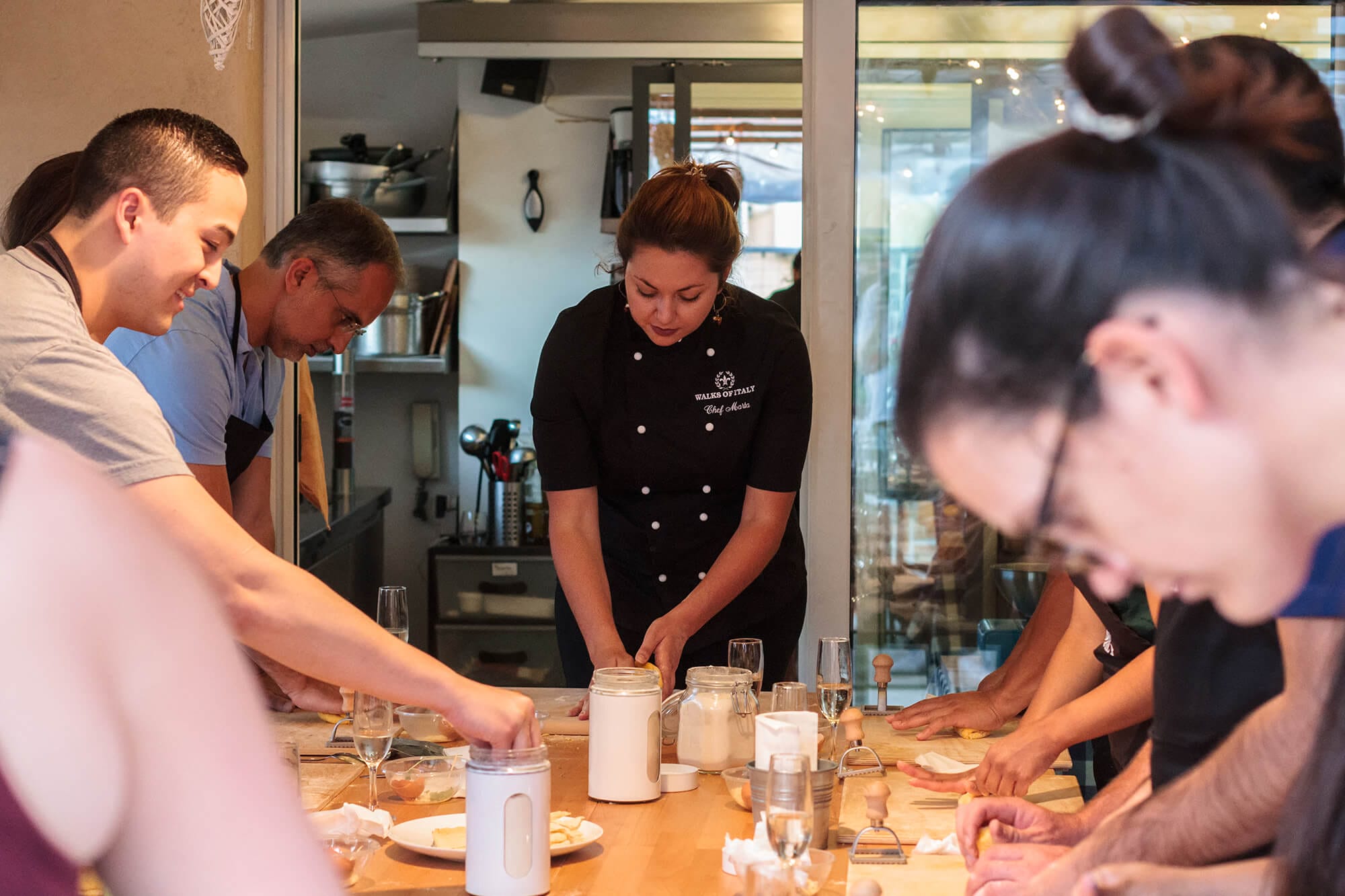
Pasta-Making Class: Cook, Dine Drink Wine with a Local Chef
€64
121 reviews

Crypts, Bones Catacombs: Underground Tour of Rome
€69
401 reviews
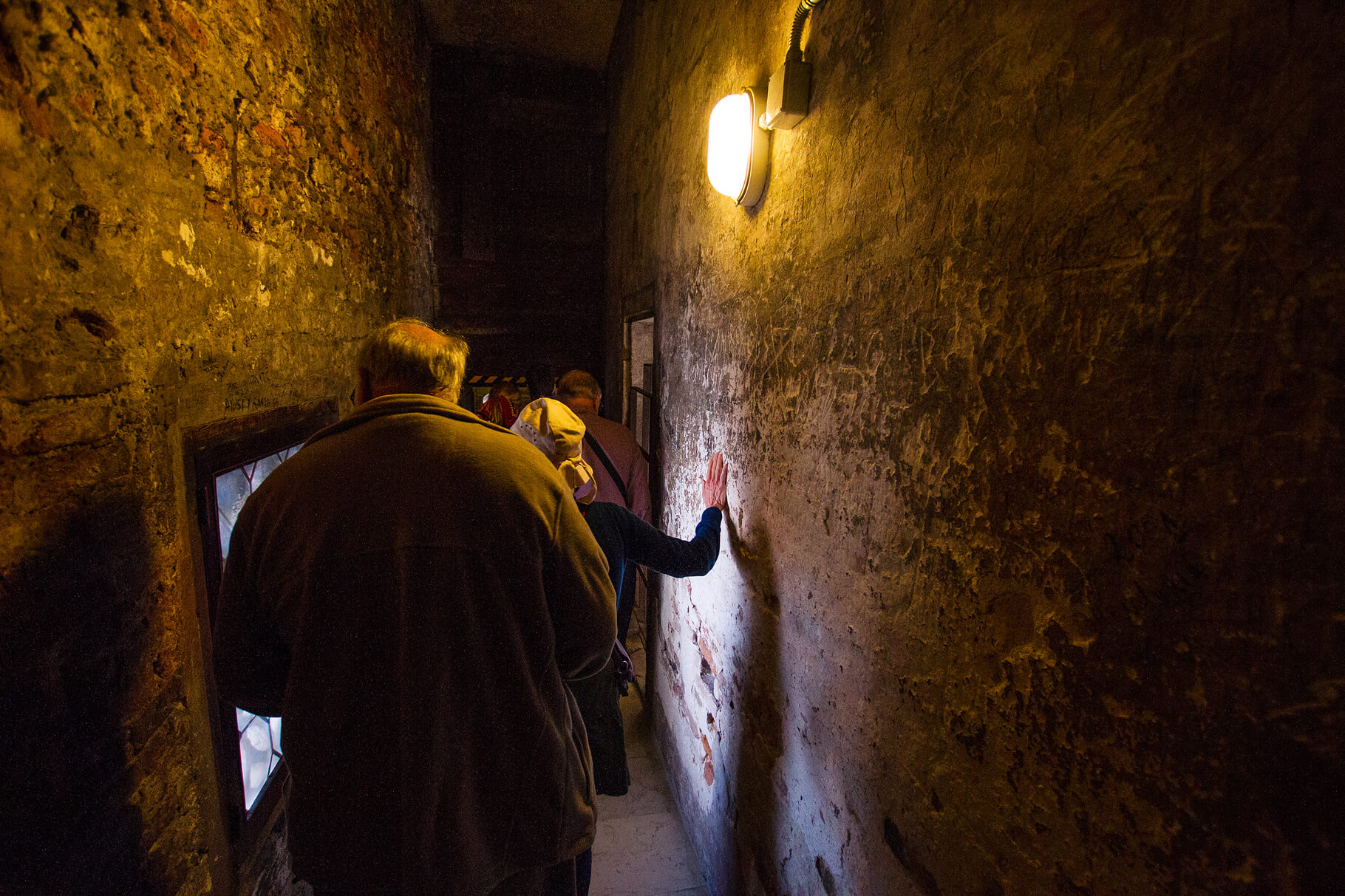
VIP Doge's Palace Secret Passages Tour
€79
18 reviews
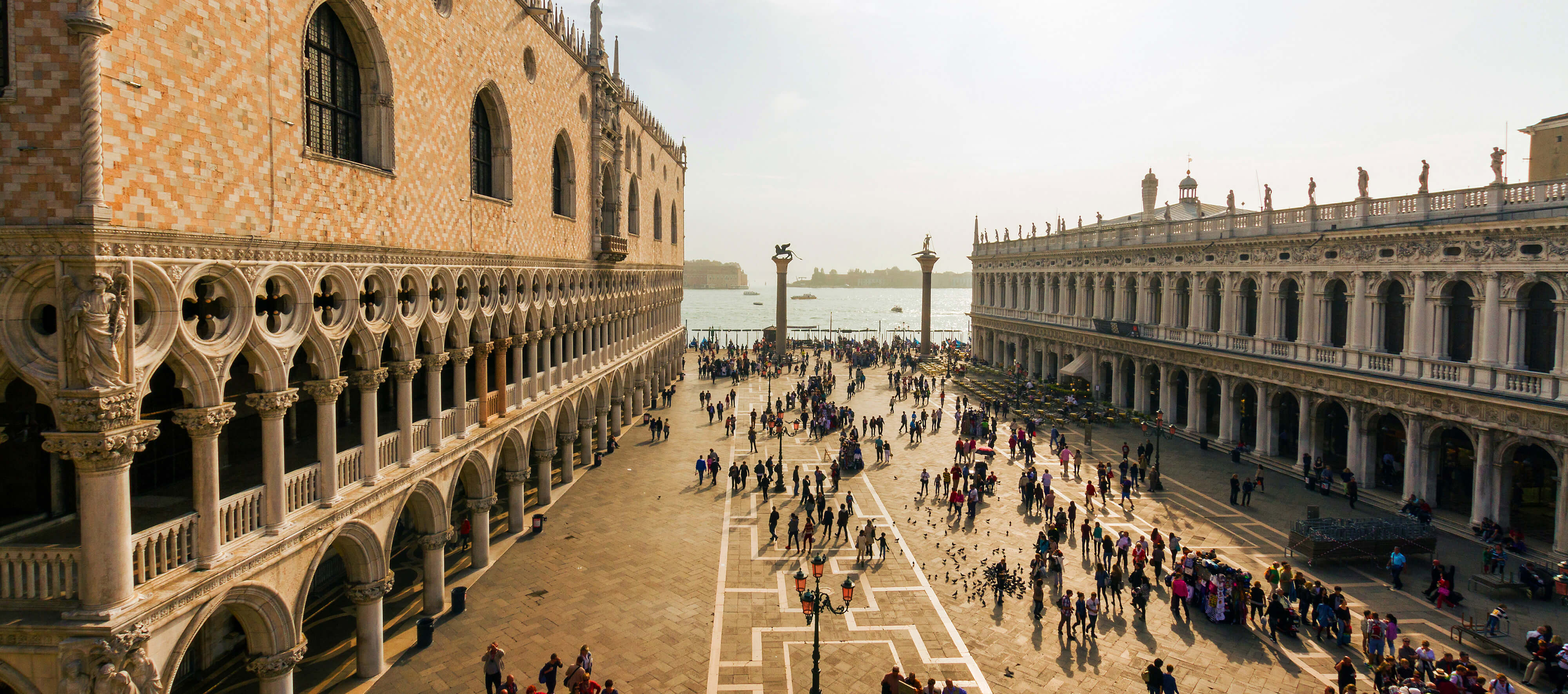
Legendary Venice: St. Mark's Basilica, Terrace Doge's Palace
€69
286 reviews

